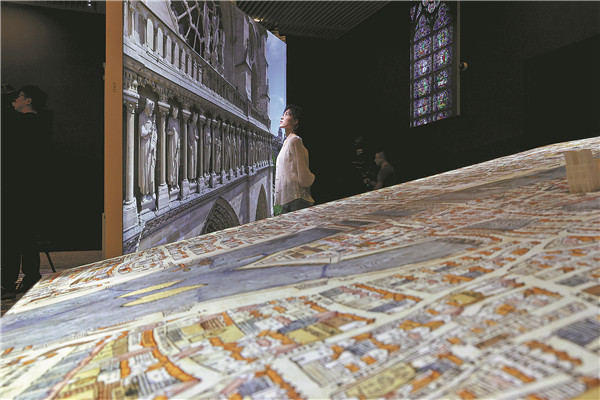

She says the experience is unique on a new level, for it is based on an integration of the use of augmented reality and the display of four artifacts that once adorned the cathedral, which have been brought to China for the first time, thanks to the cooperation between the two countries.
The objects are an early 13th-century Gothic capital — the uppermost part of a column — and three sculptures from the 19th century, a chimera, a foliate head and a gargoyle, which witnessed the church's history through thick and thin.
The exhibition is due to the exclusive sponsorship of the L'Oreal group, in collaboration with the Public Institution in charge of the conservation and the restoration of the Notre-Dame Cathedral in Paris.
Lan Zhenzhen, president of public affairs for L'Oreal North Asia and China, says as a French company, they have hoped to celebrate the 60th anniversary of the diplomatic relation between China and France by organizing a series of events including Notre-Dame de Paris, the Augmented Exhibition.
She says the exhibition shows the group's concern for young people, the seeds of hope to make the world better, and offers an opportunity for them to understand the past and present of the Notre-Dame, and the art of China and France.
Zhu, the curator, says the exhibition sheds light on what else people can do when cultural heritage suffers from severe calamities like a fire, and how museums can contribute to the conservation and restoration work, by utilizing technology to make attempts creative and innovative.
"It would take as long as four hours to tour the exhibition and read through all the contents on the tablet. It will offer people a moment of quietness and peace, and help to create an intimate space for themselves alone to listen to the cathedral, to build a link with it, being undisturbed," she says.
"And by doing so, people can find the differences and similarities in our cultures, and the younger generation, in particular, will be touched and find the impetus to anticipate a shared future."